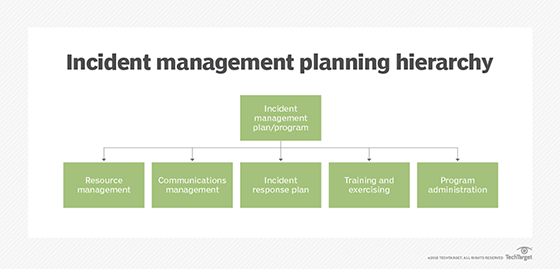
Olivier Le Moal - stock.adobe.co
Fortify emergency communications systems with a business plan
Emergency communications is one of the first actions organizations should undertake during an incident. An automated system is critical but cannot stand alone without a plan.
Every organization should have an emergency communications plan to minimize risk during a disruptive event. When an incident occurs, the ability to rapidly notify employees, first responders, stakeholders and family members is critical.
In its 2020 "Emergency Communications Report," The Business Continuity Institute noted that 67% of responding organizations use a software-based Mass notification system as a key component of their emergency communications plans. This is up from 59% in the previous year. Software-based systems that facilitate emergency communications are a critical development in the space.
Despite the growth of technology to support emergency communications, the lack of an established plan presents a risk to organizations of any size. The use of software-based emergency communications systems -- particularly those that use automation -- alongside a properly organized and regularly tested plan reduces these risks.
Manage employee communications
When any kind of disruptive event occurs, companies must first assess the situation and then communicate its existence to the appropriate parties. For a small business with only a few employees, an emergency communications plan may be as simple as a phone call, text or email to the staff. In larger organizations that span multiple locations, the emergency communications process is more complicated.
The inability to communicate quickly with employees about an emergency might cause harm or injury to employees directly affected by the situation. The organization may be unable to function normally without its full complement of employees. Further, without prior notification, employees may be unable or unprepared to respond to the situation, which could result in lawsuits. Employees and their families may file additional lawsuits if they are harmed.
For many organizations, the COVID-19 pandemic has spurred remote work models. As a result, companies must change how they notify employees of a disruptive event. Fortunately, emergency communications software makes it possible to send messages to individual employees or groups of employees, such as those working in teams or alternate work areas. The key is to continually update the software to optimize message delivery.

Incorporate automation
Whether disruption stems from an operational issue or a natural disaster, fast and efficient communication via an automated system is key.
Failure to communicate an operational issue -- such as damaged equipment that causes business interruptions -- to customers and stakeholders could result in lawsuits for failure to perform, reputational harm, and customer and revenue loss. Automated mass notification systems deliver messages quickly to large groups of people. This reduces the likelihood of negative outcomes from delays in message delivery.
Sometimes, advance warning of an impending natural disaster, such as a hurricane or snowstorm, is available. In other cases, such as tornadoes, floods, mudslides or tsunamis, there may be little to no advance warning. An emergency communications system must tap into internal and external sources of information, such as television, radio and social media, to effectively communicate a situation to employees and stakeholders as far in advance as possible.
Automated emergency communications systems also provide audit trails of the messages generated, responses received and other important metrics. Vendors for these systems currently include Everbridge, AlertMedia, Emergency Communications Network and One Call Now. An important feature of most automated systems is the "I'm OK" confirmation, in which people who receive messages can respond with their status. Access to this valuable information helps emergency teams more effectively respond to and manage the event.






